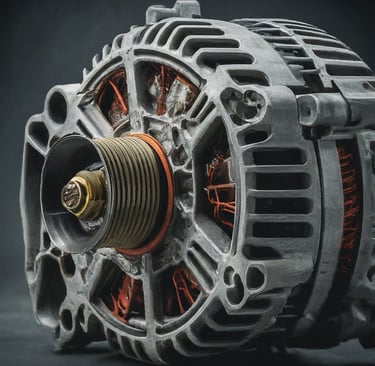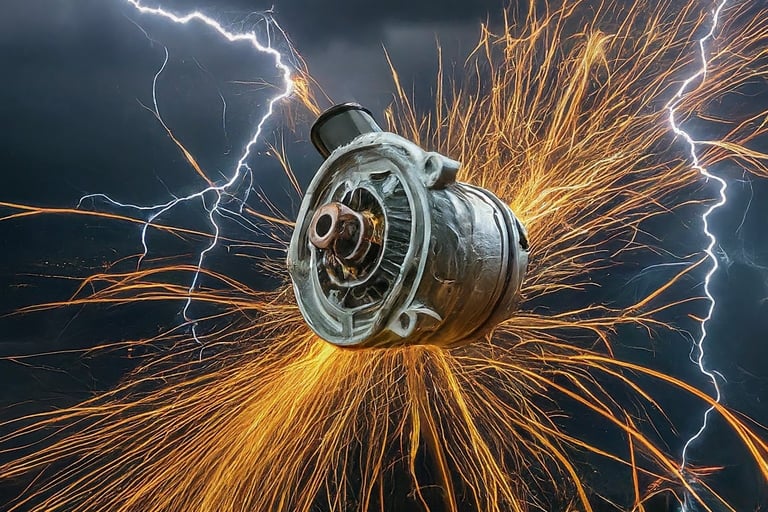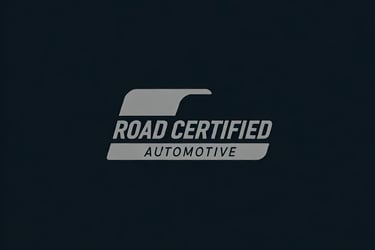Fast T's Mobile Automotive Services & Repair "Put Your Mind at Ease with Fast T's!
Understanding Alternators
Learn how alternators generate AC power and convert it to DC using a voltage regulator.



Understanding the Alternator
Detailed explanation of alternator functionality and its conversion process from AC to DC.
Alternator Basics
Conversion Process
Learn how alternators generate AC power and convert it to DC with a voltage regulator.
Alternator Operation: From AC to DC
AC Generation
1. Rotor and Stator: An alternator consists of a rotating part (rotor) and a stationary part (stator). The rotor typically has magnets or electromagnets, while the stator has windings of wire.
2. Magnetic Field: As the rotor spins, the magnetic field it generates cuts across the wires of the stator.
3. Induction: This cutting of magnetic lines induces an electromotive force (EMF) in the stator wires, causing an alternating current (AC) to flow. The direction of the current changes as the rotor rotates, resulting in a sinusoidal waveform.
AC to DC Conversion
1. Rectifier: The alternator includes a rectifier, which is a device made up of diodes. Diodes allow current to flow in one direction only.
2. Half-Wave Rectification: A simple rectifier can convert AC to DC by allowing only the positive half of the AC waveform to pass through, blocking the negative half. This results in a pulsating DC current.
3. Full-Wave Rectification: Most modern alternators use full-wave rectifiers, which allow both the positive and negative halves of the AC waveform to pass through, but invert the negative half so that it becomes positive. This results in a more stable DC current.
Voltage Regulation
1. Voltage Regulator: To ensure that the alternator produces a constant DC voltage, a voltage regulator is used. This device monitors the output voltage of the alternator and adjusts the amount of current flowing to the rotor.
2. Feedback Loop: The voltage regulator uses a feedback loop to maintain a constant output voltage. If the voltage drops, the regulator increases the current to the rotor, causing it to generate more AC. If the voltage rises, the regulator decreases the current to the rotor.
3. Excitation Control: The voltage regulator controls the excitation of the rotor, which determines the strength of the magnetic field it generates. By adjusting the excitation, the regulator can control the output voltage of the alternator.
In summary:
the alternator generates AC power through electromagnetic induction, which is then converted to DC using a rectifier. The voltage regulator ensures that the output DC voltage remains constant by controlling the excitation of the rotor. This process is essential for powering various electrical systems in vehicles, industrial machinery, and other applications.


© 2024. Fast T's Mobile Auto


("Madd Dogg" is created for the sole use by Fast T's Mobile Auto with expressed rights and permission given by local artist Mart Ford)


